ETHYL 2-MERCAPTOPROPIONATE
- CAS NO.:19788-49-9
- Empirical Formula: C5H10O2S
- Molecular Weight: 134.2
- MDL number: MFCD00040233
- EINECS: 243-314-5
- SAFETY DATA SHEET (SDS)
- Update Date: 2024-12-18 14:15:30
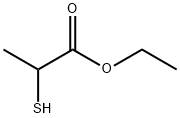
What is ETHYL 2-MERCAPTOPROPIONATE?
Chemical properties
Colorless liquid
Chemical properties
Ethyl-2-mercaptopropionate has a sulfurous, fruity odor on dilution.
Definition
ChEBI: Ethyl 2-mercaptopropionate is a carboxylic ester.
Aroma threshold values
Detection: 1 ppb
Properties of ETHYL 2-MERCAPTOPROPIONATE
| Boiling point: | 40-41 °C1 mm Hg(lit.) |
| Density | 1.031 g/mL at 25 °C(lit.) |
| refractive index | n |
| FEMA | 3279 | ETHYL 2-MERCAPTOPROPIONATE |
| Flash point: | 137 °F |
| storage temp. | Sealed in dry,Room Temperature |
| pka | 8.59±0.10(Predicted) |
| form | clear liquid |
| color | Colorless to Almost colorless |
| Odor | at 0.10 % in dipropylene glycol. sulfury meaty green onion |
| Sensitive | Air Sensitive |
| JECFA Number | 552 |
| BRN | 1071465 |
| CAS DataBase Reference | 19788-49-9(CAS DataBase Reference) |
| EPA Substance Registry System | Ethyl 2-mercaptopropionate (19788-49-9) |
Safety information for ETHYL 2-MERCAPTOPROPIONATE
| Signal word | Warning |
| Pictogram(s) |
 Flame Flammables GHS02  Exclamation Mark Irritant GHS07 |
| GHS Hazard Statements |
H226:Flammable liquids H302:Acute toxicity,oral H315:Skin corrosion/irritation H319:Serious eye damage/eye irritation H332:Acute toxicity,inhalation H335:Specific target organ toxicity, single exposure;Respiratory tract irritation |
| Precautionary Statement Codes |
P210:Keep away from heat/sparks/open flames/hot surfaces. — No smoking. P233:Keep container tightly closed. P240:Ground/bond container and receiving equipment. P261:Avoid breathing dust/fume/gas/mist/vapours/spray. P264:Wash hands thoroughly after handling. P264:Wash skin thouroughly after handling. P280:Wear protective gloves/protective clothing/eye protection/face protection. P303+P361+P353:IF ON SKIN (or hair): Remove/Take off Immediately all contaminated clothing. Rinse SKIN with water/shower. P305+P351+P338:IF IN EYES: Rinse cautiously with water for several minutes. Remove contact lenses, if present and easy to do. Continuerinsing. P370+P378:In case of fire: Use … for extinction. P405:Store locked up. P403+P235:Store in a well-ventilated place. Keep cool. P501:Dispose of contents/container to..… |
Computed Descriptors for ETHYL 2-MERCAPTOPROPIONATE
New Products
Tert-butyl bis(2-chloroethyl)carbamate (S)-3-Aminobutanenitrile hydrochloride N-Boc-D-alaninol N-BOC-D/L-ALANINOL N-octanoyl benzotriazole 4-Hydrazinobenzoic acid 3,4-Dibenzyloxybenzaldehyde Electrolytic Iron Powder 1,1’-CARBONYLDIIMIDAZOLE R-2-BENZYLOXY PROPIONIC ACID 4-HYDROXY BENZYL ALCOHOL 1,1’-CARBONYLDI (1,2-4 TRIAZOLE) S-2-CHLORO PROPIONIC ACID (2-Hydroxyphenyl)acetonitrile 4-Bromopyrazole 5-BROMO-2CYANO PYRIDINE 5,6-Dimethoxyindanone 5-broMo-2-chloro-N-cyclopentylpyriMidin-4-aMine 3-(2,4-Dimethoxybenzyl)dihydropyrimidine-2,4(1H,3H)-dione 6-Bromo-3-iodo-1-methyl-1H-indazole 4-Ethylbenzylamine N-(5-Amino-2-methylphenyl)acetamide 2-(BOC-Amino)4-picoline 1-(4-Methylphenylsulfonyl)-1H-1,2,3-benzotriazoleRelated products of tetrahydrofuran

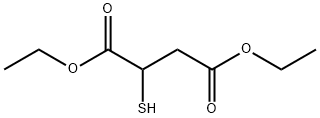
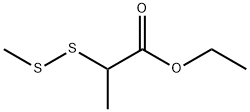
![ETHYL 2-([2-(4-CHLOROBENZYL)-4-QUINAZOLINYL]SULFANYL)PROPANOATE](https://img.chemicalbook.in/StructureFile/ChemBookStructure2/GIF/CB1694576.gif)

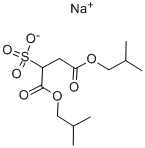
![TERT-BUTYL 2-[(4-CHLOROPHENYL)THIO]-2-METHYLPROPANOATE](https://img.chemicalbook.in/CAS/GIF/175135-87-2.gif)
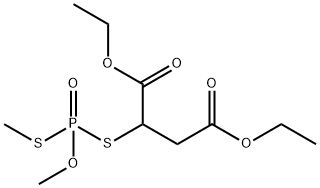
You may like
-
 Ethyl 2-Mercaptopropionate CAS 19788-49-9View Details
Ethyl 2-Mercaptopropionate CAS 19788-49-9View Details
19788-49-9 -
 100-71-0 99%View Details
100-71-0 99%View Details
100-71-0 -
 2 2-BIS(2-HYDROXYETHOXY)-1 1-BINAPHTHYL 99%View Details
2 2-BIS(2-HYDROXYETHOXY)-1 1-BINAPHTHYL 99%View Details
55441-95-7 -
 Chloro Uracil 1820-81-1 99%View Details
Chloro Uracil 1820-81-1 99%View Details
1820-81-1 -
 2-ethyl-6-methyl-3-hydroxypyridine succinate 127464-43-1 99%View Details
2-ethyl-6-methyl-3-hydroxypyridine succinate 127464-43-1 99%View Details
127464-43-1 -
 13162-05-5 N-Vinylformamide 99%View Details
13162-05-5 N-Vinylformamide 99%View Details
13162-05-5 -
 1446013-08-6 98%View Details
1446013-08-6 98%View Details
1446013-08-6 -
 Ste-Glu-AEEA-AEEA-OSUView Details
Ste-Glu-AEEA-AEEA-OSUView Details
1169630-40-3
Statement: All products displayed on this website are only used for non medical purposes such as industrial applications or scientific research, and cannot be used for clinical diagnosis or treatment of humans or animals. They are not medicinal or edible.